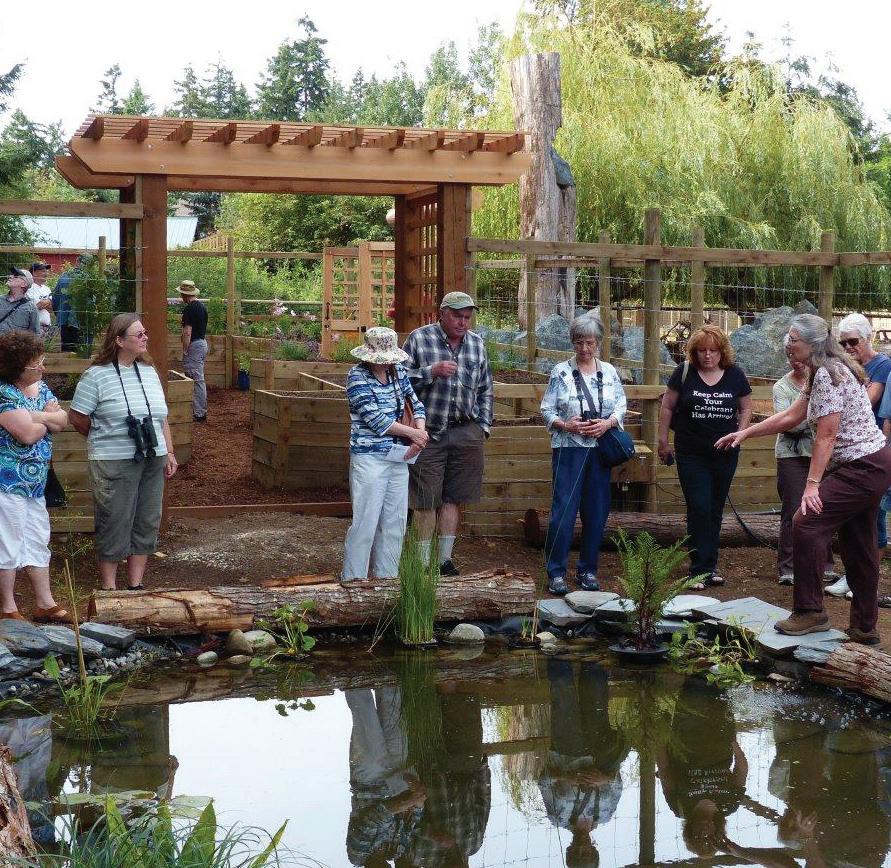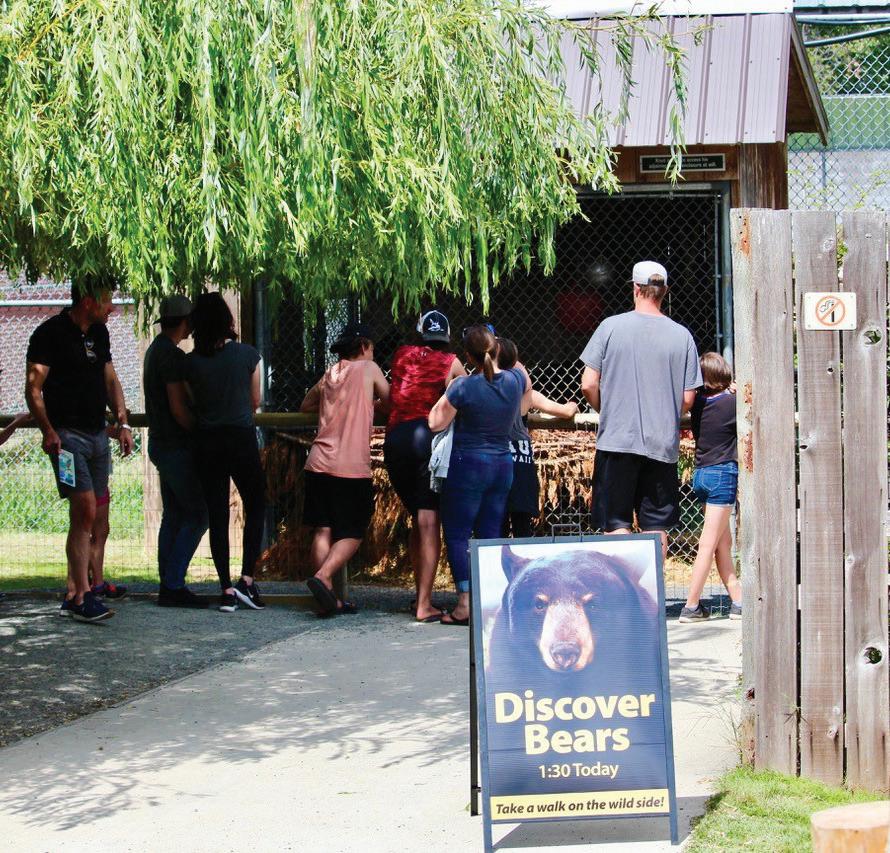
3 minute read
NORTH ISLAND WILDLIFE RECOVERY CENTRE
NI C W

Advertisement






North Island Wildlife Recovery Centre
A CENTRE FOR HEALING, INSPIRED BY AN OWL NAMED SPIRIT
by Jen Groundwater

Opposite from top l to r Midnight. Joey and Teresa. A group of visitors at the pond. Robin and Sylvia Campbell. Sandor. Turkey vulture. Joey the barn owl. Summer visitors head into one of NIWRC's Discover Bears presentations running Monday to Friday, throughout July and August.
Above Spirit who started it all. he North Island Wildlife Recovery Centre is one of the most popular tourism draws on the Island, with near-perfect Google and TripAdvisor ratings, yet many locals have never experienced this remarkable eight-acre sanctuary. It’s in Errington, and a mere 20 minutes from the Fairwinds Wellness Club! So what are you waiting for?
The NIWRC is a place to bring injured or orphaned birds and other animals for rehabilitation and eventual release back into the wild. It’s home to eagles, owls, turtles, other birds and even bears, but its staff and volunteers try to help every wild creature that gets dropped off here.
The centre got its start on Christmas Day 1984, when a man named Robin Campbell brought home something unexpected: a great horned owl that had wrapped itself in barbed wire. Though Robin and his family didn’t know it at the time, this injured bird would turn out to be the most wonderful of gifts.
A vet said the bird’s wing would have to be amputated, so Robin and his wife, Sylvia, built a cage on their bedroom balcony for the owl, which they named Spirit. As Spirit recovered from the amputation, people in the area began to bring other birds and animals to the Campbells. “We took in one-eyed owls and three-legged deer,” says Sylvia, and whatever else people brought to them. Though Robin now has all kinds of T qualifications, in the early days, he had no formal training or credentials, just a deep desire to help animals. And he had a formidable partner in Sylvia. Of their chaotic early days, when random animals would get dropped off at all hours and people would just stop by to see what was going on, she simply says: “Who wouldn’t want to have a life like that?”
With a determined band of supporters, in 1985 the Campbells set up a not-forprofit society devoted to helping injured, ill, or orphaned wildlife.
Things really took flight the next year— pun entirely intended—after Robin took in 29 eagles that had been accidentally poisoned. “We had a barn full of eagles!” recalls Sylvia. Amazingly, they were able to save 25 of the birds. The resulting international media attention sent a flood of donations their way, which the Campbells put towards building enclosures for birds, as well as their onsite Museum of Nature.
“Whatever came in, we took it,” says Sylvia, “raccoons, otters, beavers, deer…” They’ve had swans and foxes, herons and even snakes. Once they even had a seal, which they had to keep in the bathtub.
These days, they don’t work much with mammals (MARS, in the Comox Valley, handles raccoons and deer), except for black bears, which they’ve been working with since the early 2000s in partnership with Dr. Malcolm McAdie, a renowned wildlife veterinarian.
The centre houses a treatment facility










